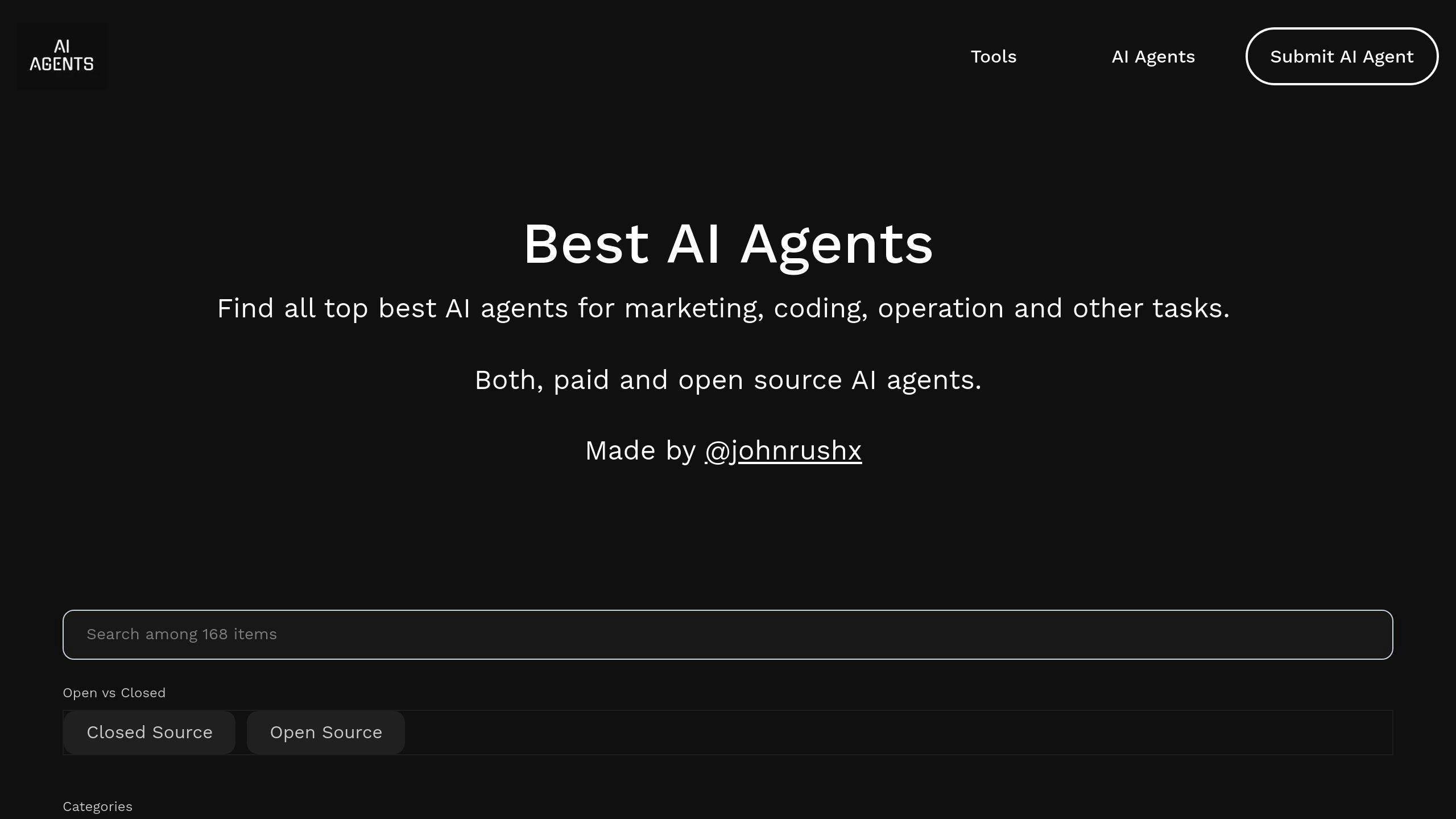Deploying AI ethically is about balancing innovation with accountability. Organizations face challenges like bias, trust issues, and regulatory risks. To address these, they must:
- Engage diverse stakeholders (developers, policymakers, communities).
- Use ethical AI frameworks like the EU AI Act and NIST Risk Management Framework.
- Implement tools like Best AI Agents for transparency, communication, and bias reduction.
Key Takeaways:
- Ethical AI improves trust but may increase costs and timelines.
- Frameworks guide compliance and stakeholder engagement.
- Practical strategies include monitoring, feedback loops, and bias detection.
Quick Comparison of Ethical AI Frameworks:
| Framework | Focus | Key Features |
|---|---|---|
| EU AI Act | Legal Compliance | Risk assessments, user rights |
| NIST Framework | Risk Management | Governance, multi-stakeholder input |
| ISO/IEC 42001 | Organizational Standards | Leadership roles, compliance benchmarks |
Ethical AI isn't just about technology - it's about aligning systems with societal values while managing trade-offs like cost and efficiency.
1. Best AI Agents

Stakeholder Needs
Best AI Agents is a directory designed to help users find AI tools that match the needs of various stakeholders while adhering to ethical standards. It organizes these tools into categories based on their intended purpose, making it easier to find solutions for different groups. For example, in education, stakeholders include students, teachers, administrators, and parents. The directory highlights tools that address these groups' specific needs while prioritizing privacy and fairness.
In addition to tool selection, the directory provides resources to help resolve conflicts through tailored solutions.
Addressing Conflicts
Resolving conflicts related to AI requires tools that focus on transparency and fairness. The directory includes analytics and customer service tools that help organizations handle stakeholder disputes effectively:
| Conflict Resolution Area | Approach | Benefit to Stakeholders |
|---|---|---|
| Transparency | Use analytics tools to track decisions | Creates clear audit trails for accountability |
| Communication | Deploy multilingual AI for customer service | Ensures inclusive communication across diverse groups |
| Fairness | Implement bias reduction tools | Supports equitable treatment for all stakeholders |
These strategies have been successfully applied in real-world scenarios, as detailed below.
Real-World Applications
Organizations use the directory to navigate competing priorities in fields like customer service, education, and marketing:
- Customer Service: AI tools improve efficiency while maintaining fairness, offering decision logs to ensure accountability.
- Education: The directory helps schools choose tools that prioritize privacy, accessibility, and effectiveness, enabling ethical decision-making.
- Marketing and Analytics: Marketing tools provide insights that align with business objectives while safeguarding stakeholder privacy.
2. Key Ethical AI Frameworks
Stakeholder Coverage
When it comes to ethical AI, three key frameworks stand out: EU AI Act, NIST's AI Risk Management Framework, and ISO/IEC 42001. Each emphasizes the importance of involving stakeholders and addressing their concerns. Here's a quick breakdown:
| Framework | Primary Focus | Key Stakeholder Considerations |
|---|---|---|
| EU AI Act | Legal Compliance | Includes mandatory risk assessments and protecting user rights |
| NIST Framework | Risk Management | Focuses on governance involving multiple stakeholders and evaluating impacts |
| ISO/IEC 42001 | Organizational Standards | Sets leadership roles and compliance benchmarks |
These frameworks don't just guide stakeholder engagement - they also offer strategies for managing conflicts during AI implementation. Tools like Best AI Agents can help organizations align their AI tools with these standards, ensuring responsible practices.
Conflict Resolution Strategies
Managing conflicts in AI deployment requires a structured approach that balances competing interests. For example, healthcare systems often prioritize both patient privacy and operational efficiency [1]. Effective strategies include:
- Ensuring regulatory compliance
- Addressing ethical concerns proactively
"Neglecting data and AI ethics risks financial and reputational harm." [3]
These strategies are particularly relevant in industries like healthcare and finance, where ethical considerations are critical.
Practical Use Cases
In practice, industries like finance have adopted tools to ensure ethical AI use while maintaining performance. Some examples include:
- AI Verify Testing Framework: This tool tests whether AI systems meet ethical standards while supporting business goals.
- Implementation Guide (ISAGO): A self-assessment tool that helps organizations evaluate AI systems against ethical criteria, ensuring a balance of stakeholder interests.
- Monitoring Systems: Regular assessments track the impact of AI systems on various stakeholders, enabling timely adjustments to address any issues.
These practical tools and strategies demonstrate how ethical AI frameworks can be applied effectively across different sectors.
Related video from YouTube
sbb-itb-f88cb20
Advantages and Disadvantages
Balancing the interests of stakeholders while deploying ethical AI comes with its own set of benefits and challenges. Here's a closer look:
| Aspect | Advantages | Disadvantages |
|---|---|---|
| Stakeholder Trust | - Greater transparency and accountability in decision-making - Builds user confidence in AI systems |
- Longer development timelines - Higher implementation costs - Complex communication with diverse stakeholders |
| Regulatory Compliance | - Aligns with ethical AI regulations - Minimizes legal risks - Simplifies audit processes |
- Requires ongoing resources for monitoring and updates - Managing compliance across multiple jurisdictions can be difficult |
| Operational Impact | - Strengthened governance and risk management - Improved detection of biases |
- Slower deployment processes - Additional validation steps needed - Potential performance trade-offs |
The NIST framework has been shown to reduce AI-related incidents while increasing stakeholder satisfaction [1]. Similarly, organizations adopting ISO/IEC 42001 standards have reported better outcomes in identifying and addressing biases early in development [2]. This early intervention helps prevent discriminatory results and ensures AI systems align with societal expectations.
However, maintaining a balance between ethical practices and operational efficiency demands careful planning and resource allocation [4]. These trade-offs are critical for organizations striving to implement ethical AI effectively, as discussed further in the concluding section.
Conclusion
Deploying ethical AI systems successfully means finding a balance between the needs of various stakeholders and strong governance structures. Organizations that follow structured approaches often see better results in managing ethics alongside operational efficiency. To make this happen, actionable strategies must address stakeholder concerns head-on.
Using multi-stakeholder frameworks, like those emphasized in the EU AI Act, has proven effective in managing ethical challenges while driving innovation. Tools such as Best AI Agents assist by offering solutions for monitoring, ensuring compliance, and engaging stakeholders effectively.
Here are three key strategies for ethical AI deployment:
1. Engage Stakeholders Regularly
Frequent consultations and feedback loops allow organizations to spot ethical concerns early in the development process.
2. Set Up Effective Monitoring Systems
Monitoring is crucial to ensure systems remain aligned with ethical and regulatory standards. Clear metrics help measure success, including:
| Success Metric | Key Indicators |
|---|---|
| Stakeholder Trust | User satisfaction, quality of feedback, engagement |
| Ethical Compliance | Bias detection, incident resolution, audit results |
| System Performance | Accuracy, fairness, transparency |
3. Promote Ethical Practices Across Teams
Building a culture of accountability and transparency is essential. This includes regular training, open communication channels, and clear protocols for managing ethical issues.
FAQs
Who are the stakeholders in AI ethics?
AI ethics relies on input from a variety of groups, each playing a critical role in ensuring AI is used responsibly. Here's a breakdown of their contributions:
| Stakeholder Group | Role and Contributions |
|---|---|
| Policymakers & Regulators | Create guidelines and monitor compliance with ethical standards. |
| Social Scientists & Legal Experts | Evaluate societal effects and ensure legal requirements are met. |
| Developers & Engineers | Build systems while adhering to ethical programming practices. |
| End Users & Communities | Offer feedback and test how AI performs in practical settings. |
| Business Leaders | Direct resources and establish ethical priorities. |
The EU AI Act is a great example of collaboration between policymakers and technical experts, aiming to balance ethical challenges with progress in AI development [1]. Tools like Best AI Agents assist organizations in aligning stakeholder needs with the right AI solutions.
Community voices also play a key role. Representatives ensure that AI applications respect local values and address societal priorities. This is especially important in fields like healthcare and education, where AI can have a profound impact [3].
When experts from different fields work together, it leads to more balanced AI development. Using frameworks like NIST's, organizations can align AI systems with ethical standards and societal expectations, leading to successful, responsible implementations [1].


